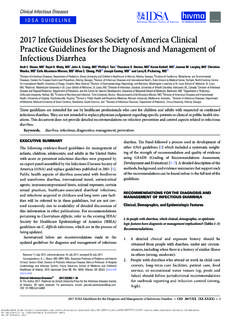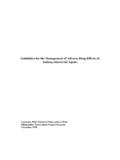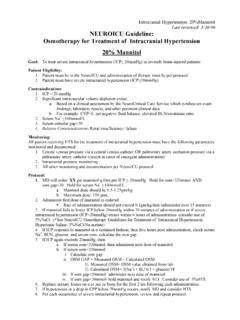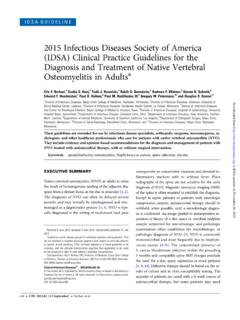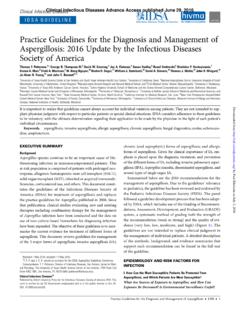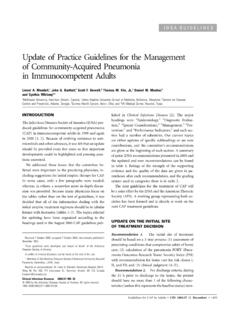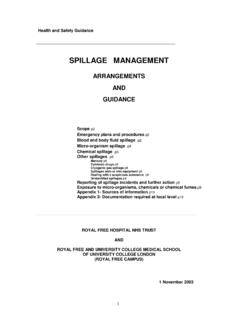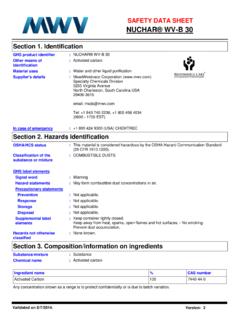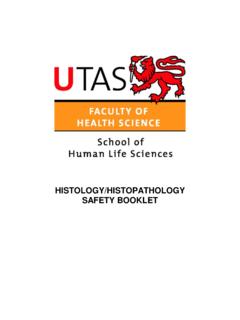Transcription of For Fit Testing Technicians and Employees - Penn …
1 Last Revised: 6/4/2009 1860 1870 N95 respirator Fit Testing , Fit Checking, and Handling Procedure For Fit Testing Technicians and Employees 1. Wearing the respirator : Don and wear the respirator in accordance with the manufacturer recommendations. Refer to 3M Wear It Right Instructions for N95 respirator use (Attachment 1) 2. Fit Testing (No chewing gum, eating, drinking 15 minutes prior to the test) In the University of Pennsylvania Health System (UPHS) part of your employment may require the use of a respirator to eliminate the inhalation risk of biological hazards including Tuberculosis (TB).
2 OSHA requires that workers be fit tested to ensure that the respirator fits correctly and no leaks exist. Though a respirator may feel like it fits well, without a fit test there is no guarantee that it is the correct model and size to fit the individual health care worker s facial configuration. -Medical evaluations should be reviewed by a licensed medical professional. If any questions are answered YES on the questionnaire DO NOT FIT TEST defer back to medical professional Procedure [ technician ] -Discuss with employee the purpose, need, and steps that are going to be completed during this fit Testing procedure.
3 [ employee ] -You will be wearing an N95 respirator to protect your respiratory system from biological hazards such as viruses and TB. A proper fit and seal is the most important part of wearing a respirator . Handle you respirator with care. 1. Sensitivity Test/Taste Threshold Screening. Don the Testing hood. The fit Testing hood is used to create a proper test environment. The employee will breathe through an open mouth with the tongue slightly extended. A fine saccharin aerosol will be introduced into the hood and the employee should report if a sweet taste is detected. Remove Testing hood and rinse mouth with water to remove any remaining taste prior to fit test.
4 2. Fit Test with the respirator . Don the respirator and the Testing hood. During the Testing period, a very fine saccharin aerosol should be introduced every 30 seconds to maintain a level of sweetness determined by the sensitivity test (the full amount at first, then half the amount every 30 seconds). No sweetness should be detected. A properly fitting respirator will filter out all saccharin particles. If sweetness is tasted at any point during the test, notify the technician immediately. If sweetness is detected, the test will be stopped, the hood removed, mouth rinsed with water, and the fit of your respirator will be evaluated and corrected, or another type/size of respirator used.
5 (1860, 1860S, 1870 [duckbill]) Last Revised: 6/4/2009 1860 1870 Fit Testing Exercises (all exercises should be performed for 1 minute each) The technician will guide you through these exercises. These exercises are motions of the head and face that would be expected when completing normal job responsibilities. Exercise 1 Normal Breathing Exercise 2 Deep Breathing Slow deep breathes (slowly and space breaths in order to avoid hyperventilation) Exercise 3 Head side-to-side Slowly turn your head from one side to another, like a slow exaggerated NO . This helps determine if any leaks occur when you turn your head to look at the door or a co-worker.
6 Exercise 4 Head up and down Slowly move your head up and down, like a slow exaggerated YES . This helps determine if any leaks would occur if you look up at a monitor or look down at the patient. Exercise 5 Talking Talk out loud (read or count). (See Attachment 2 - Rainbow Passage). Take your time so you do not feel short of breath (reading faster will not make the minutes go faster). This helps determine if respirator leaks occur during facial movements. Exercise 6 Normal Breathing 3. Test Completion After completing 1. The sensitivity test and 2. The fit test and exercises, you will be asked to remove the hood and respirator .
7 You will be given a form or card that states the model and size of respirator that fits you. Follow manufacturer instructions on respirator use and care. Label your respirator immediately and refer to Conservation of N95 Respirators in Attachment 3). 4. Fit check (to be performed every time the respirator is worn) - Negative fit check: Cup hands over respirator without excessive pressure. Breathe in sharply. A light collapse of the respirator should be felt with no air leaking in around the face-to-face piece seal. + Positive fit check: Cup hands over respirator . Blow out. A built-up of air should be felt with no air leaking our around the face-to-face piece seal.
8 5. Use, Care, and Disposal Wear your N95 respirator as long as you get a good seal. This respirator is not a one-time use device. Refer to attachment 3 for details. - Label your mask immediately on the strap - Do not bend, crush, mutilate - Keep clean (use a ziplock style bag) - Maintain original shape and ensure the respirator is wearable multiple times (straighten the metal nose band before each use) Last Revised: 5/3/2009 ATTACHMENT 1 Wear It Right3M Respirators3M 1860/1860S Health Care N95 Particulate respirator and Surgical MaskCup the respirator in yourhand with the nosepiece atfingertips, allowing the head strapsto hang freely below the respirator under your chin with thenosepiece up.
9 While holding the respiratorin place, pull the top strapover your head so it rests high onthe back of your continuing to holdthe respirator firmly inplace, pull the bottom strap overyour head and position it aroundyour neck, below your the straps. Position therespirator low on your nose. Using both hands, mold the nosepiece to the shapeof your nose by pushing inwardwhile moving your fingertips down both sides of the : Always use two handswhen molding with one hand mayresult in improper fit and lesseffective respirator respirator helps protect againstcertain particulate contaminants,but does not eliminate exposure to or risk of contracting disease or infection.
10 Misuse may result in sickness or death. For properuse, see your supervisor or call 3M Occupational Health andEnvironmental Safety DivisionTechnical Services at 1-800-243-4630. APPLICATION:123 Without touching the respirator , slowly lift thebottom strap from around yourneck up and over your off the top strap. Do nottouch the or discard accordingto your facility s infectioncontrol :123 The respirator must bechecked before each use. To perform the fit check, placeboth hands completely over the respirator , being careful not to disturb the position, and exhalesharply. If air leaks around yournose, adjust the nosepiece asdescribed in step 5.
